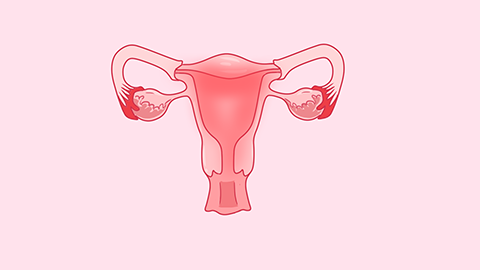How is endometritis caused?
Generally, endometritis may be caused by factors such as poor menstrual hygiene, inadequate postpartum endometrial repair, intrauterine procedural infections, spread of pelvic inflammatory disease, or ascending infection from bacterial vaginosis. It is recommended to seek timely medical consultation to identify the cause and improve the condition under a doctor's guidance through general treatments, medications, and other methods. A detailed analysis is as follows:

1. Poor menstrual hygiene: During menstruation, the endometrium sheds and forms a wound surface. If hygiene is neglected, unclean sanitary products are used, or sexual intercourse occurs during this time, bacteria can easily enter the uterine cavity and cause inflammation, manifesting as menstrual cramps and increased menstrual flow. It is advisable to wash the vulva daily with warm water, choose cotton sanitary pads from reputable brands and change them frequently, avoid sexual intercourse and tub bathing during menstruation, and reduce the chance of bacterial invasion.
2. Inadequate postpartum endometrial repair: After childbirth, there is a wound surface on the endometrium. If the body's resistance decreases during the repair process, bacterial proliferation and infection can occur, leading to inflammation, often accompanied by abnormal lochia and lower abdominal pressure. Postpartum rest is important, excessive fatigue should be avoided, and the vulva should be kept clean. Dietary intake of protein should be increased to promote endometrial repair.
3. Intrauterine procedural infection: Procedures such as induced abortion, curettage, or intrauterine device placement can lead to inflammation if sterilization is inadequate or postoperative care is improper, allowing bacteria to enter the uterine cavity. Symptoms may include fever and vaginal bleeding. It is important to follow medical advice and use medications such as cefixime dispersible tablets, metronidazole tablets, and doxycycline hydrochloride tablets to prevent infection after the procedure.
4. Spread of pelvic inflammatory disease: When organs such as the fallopian tubes and ovaries in the pelvis become inflamed, the inflammation may spread to the endometrium, causing endometritis, often accompanied by lumbosacral pain and increased vaginal discharge. Follow medical advice to use medications such as levofloxacin capsules, cefuroxime axetil tablets, and metronidazole tablets to control the inflammation.
5. Ascending infection from bacterial vaginosis: Imbalance of the vaginal flora can lead to bacterial vaginosis, and pathogens may ascend through the cervix into the uterine cavity, infecting the endometrium and causing inflammation, manifested as vaginal discharge with an unpleasant odor and external genital itching. Follow medical advice and use medications such as metronidazole suppositories, clindamycin phosphate suppositories, and tinidazole suppositories to treat the vaginal condition.
In daily life, maintaining a regular lifestyle, avoiding staying up late, and enhancing physical resistance are important. Regular gynecological examinations should be conducted for early detection and intervention to maintain reproductive health.




